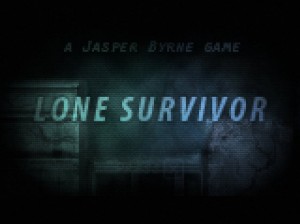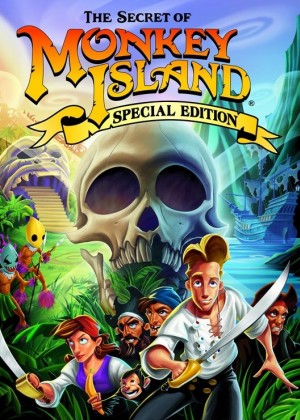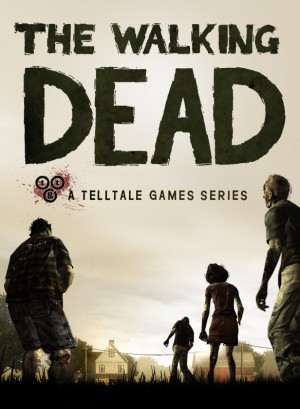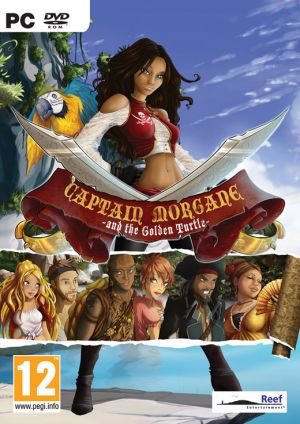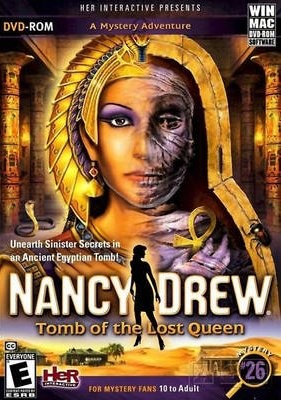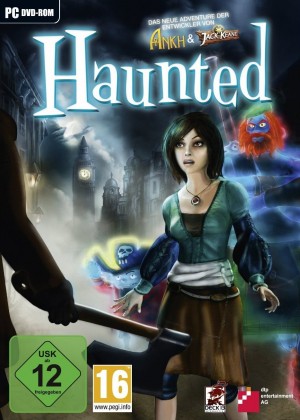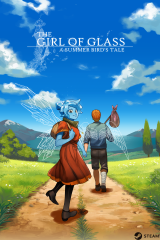Review for Lone Survivor page 2
If you’re concerned about genre labels, you'd probably have to define Lone Survivor as being a retro indie survival horror action-adventure game. But while it surely is all of those things, it’s truly best described as a simulation of surviving a clueless, fearful life. The focus isn’t really on the horrible creatures you encounter or the reason those creatures are there—it’s a game about those times we all feel destitute, yet in our desperation find something to help us get through, whether the thought of a companion, our dreams, a good night’s sleep, or tiny, mood-altering, color-coded pills. And you’ll definitely need to find something here, because this game is stressful. But like the best horror films, it stresses you out in a satisfying way, keeping you riveted within its throes even as you frantically search for a way out.
After a surreal dream involving espresso and a man with a box for a head, the game truly opens with you waking up in someone else’s apartment, with no knowledge of your circumstances other than that there are hideous things beyond the door and you need to survive. You’re barefoot (to tread lightly and not alert any creatures), and you don a surgical mask to protect you from who-knows-what. The concept of survival in this game means getting enough rest, eating well, making it through your night terrors (which lead to dream sequences), and of course finding someone—anyone—along the way to help you understand what exactly is happening.
As you try to escape from this horrible place and its inhabitants, there’s a very distinct and unnerving sense of isolation, and the story really isn’t about the cast of crazies you run into; it’s about you. In fact, ‘You’ is actually the character’s name: the protagonist doesn’t even seem bothered to remember his real name. The game’s goal, it seems, is to make you feel truly autonomous: though you control a male onscreen avatar, it’s really you making these decisions. It’s you surviving horrible things. And it’s the personal choices in the way you play that sets it apart from the game that obviously inspired it.
Creator Jasper Byrne is clearly a huge fan of Silent Hill 2. Not only is Lone Survivor strewn with references to it (including some very similar sound effects), but one of his earlier games, Quiet Mountain II, is a 2D, 8-bit “demake” of that game. You’ll find plenty that’s been influenced by Silent Hill here, like the odd deformity of the monsters themselves, the near-interchangeability of the “real world” and something seemingly from a nightmare, and the static radio noise when you near monsters (which may be an unexplained homage in this game, or it may have to do with the bizarre radio samplings in your starting location). David Lynch must have been an inspiration for this game as well, with nods to Twin Peaks and Lost Highway ever-present. The result is a game that’s creepy and cool, yet entirely fascinating.
Picking the game up is quite simple. It’s keyboard-only, and you use the arrow keys to move around the side-scrolling screens, the space bar to access your inventory, and other hotkeys to see your map, turn on your flashlight (careful: the battery runs out) and interact with the environment. If you decide to use a weapon, you simply hit another key to equip your gun. It’s nothing too complicated, but it should be noted that you have to know your way around the controls to survive—the game doesn’t pause when you’re shuffling through a menu to quickly find something to take care of an enemy.
Early on you’ll find a map, which is conveniently marked with your location and any areas you have/haven’t explored. This is great, but it can still be difficult to figure out exactly where you are and where you’re heading. It got tedious switching back and forth between menus just so I could get a grasp of my location. As you progress, areas will change, seemingly on their own. A well-made bedroom may be trashed the next time you enter it, doors may suddenly become unlocked, and the few characters you meet may disappear or become something else entirely. Luckily, while the effect is trippy in its own way, it never feels random or hopeless. You’ll always be clued in on subtle changes, and the map will inform you with a nice big question mark in the changed location.
How you deal with enemies is entirely up to you, and will change the way you experience the game and the way it unfolds. For example, although you do receive a weapon, you don’t have to use it. Ever. My first time through the game, I took the pacifist route and I never pulled the trigger. This choice led to different strategies, a different ending, and even certain puzzles that wouldn’t exist if I had chosen to simply shoot my way through.
Also affecting the game’s outcome—as well as your in-game mental health—are the pills and food items scattered throughout. After playing for a while, the protagonist will get hungry or tired. Sleeping may seem as simple as finding a way back to your bed (which also saves the game), but when you’re far from home, it’s tempting to just pop a pill that perks you up a bit. You can also sacrifice a bit of sanity by staving off hunger with pills—leading to some pretty bizarre dreams and outcomes in your game—or you can find cookware and food items to combine to stay full. Either way, the experience is incredibly entertaining, and you’ll be surprised in multiple playthroughs to see how your insomnia or gun-happy lifestyle influences things.
Other than using the items mandatory for staying alive, you won’t find that many objects used for puzzles, nor will you find that many puzzles in general. Perhaps that's a good thing, as the ones that are present—including finding a makeshift item to open a tricky door—feel a little uninspired. During the game’s final puzzle, in fact, I knew the answer to the puzzle simply by picking up an object and guessing what it’d be for. The puzzles work as a means to an end, but they aren’t by any means satisfying.
Adventure gamers should note that while it’s optional to fire your gun, Lone Survivor does still require you to be on your toes. Even if you don’t harm a soul, the experience is far more action-packed and twitchy than your standard 2D adventure game. Monsters are encountered fairly frequently, and at first you’ll find yourself hiding in dark areas and tossing bait to escape enemies. Later you’ll pick up flares to distract them, but I found the precision required to place them effectively was no easier than simply firing your gun in the right direction in the heat of the moment. There’s also a section halfway through where you’re chased across several maze-like screens by a monster, and if you don’t have the area memorized, it’s unlikely that you’ll avoid being attacked or running into a dead end. You’ll have to be okay with dying several times, though the frequency of save points makes the occasional death much more tolerable.
Though the game has a distinctively low-res, 8-bit style with a muted palette and noise filter, it’s still incredibly (if disturbingly) beautiful. With flickering lights, clever use of spotlights and color, and environments that change and contort, you may find yourself in awe and a little frightened at the same time. The developer composed his own music, which has a very creepy, mellow pop, lo-fi sound. Add to that some haunting classic Silent Hill-esque sound effects, and you have a very thoughtfully constructed package that screenshots alone cannot do justice.
One thing that feels a little out of place, however, is the dialog. It comes across a little flat, and the main character often talks aloud, narrating his feelings, which detracts from the solitary mood and the ability to invest your own emotions in the experience. Due to the nature of the game—one that’s far more about atmosphere than some big, overarching plot—dialog may have been better used in a sparse, suggestive way. Diary notes and letters found along the way certainly add to the narrative, but coming face-to-face with one of the few survivors and having them gab at you removes you from the horror somewhat.
By the second half of this roughly four-hour game, you’ll be a little more aware of the psychological pitfalls thrown at you, and you’ll find yourself much more in tune with traveling back to areas that will net you food and sleep. The stress of item management will also be lessened somewhat, because by then you’ll have some understanding of the game’s once-obtuse details regarding how much, say, cheese and crackers will fill you up, or whether the little red pill will help you power on without sleep. There’s a bit of backtracking required, but it’s nothing lengthy; if anything, it’s satisfying to go back to older areas when you feel you have a bit more control, whether you’ve already killed the enemies or found an easy way around them.
Once you get used to navigating the apartment building, the game is straightforward and linear enough to make it relatively clear which doors need unlocking and which monsters must be overcome. You’ll eventually make your way outside of the apartment and see a little of what’s become of the streets, stores and hospitals in town. But while you may encounter a survivor or find someone’s remains, you never feel like you’re unraveling a great mystery or even hoping to discover one. This game is more about the tension of being one of the last remaining survivors and seeing how your personal choices affect the character and his ending.
While the experience feels a little on the short side, it's not unfairly so. It’s a brief but stressful experience that's enjoyable while it lasts, but you’ll be emotionally relieved to get out of there at the end. Some things can lengthen the play time a bit. You’ll come across objects and characters that serve as side quests that either procure new items or alter the story, including a stray cat that you can feed if it warms up to you. Add to that the different methods of playing and replaying the game (shoot/don’t shoot, eat healthy/pop pills), and you have a lot of varied replay value.
Returning to the contentious topic of genre labels, this game shows glimpses of the classic Sierra/LucasArts adventure games of yore, but with its near-constant danger it's ultimately best considered a survival horror game with an old-school 2D aesthetic. If you're okay with a bit of action-infused side-scrolling, then taken on its own terms—as a game about surviving, and doing whatever it takes to get through—it’s fantastic. Ultimately, Lone Survivor is a very personal, choice-driven experiment in psychological horror, and the combined elements from different genres make for a unique experience that you’ll not want to miss.


